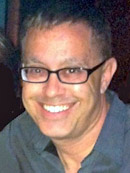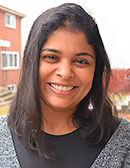
THE BRIDGE TO COLLEGE
MY ADMISSIONS SEASON – PART 2

Please read Part 1 of Elizabeth’s admissions story, found in last month’s Khaas Baat. Here is the remainder of her story.
The waiting game was the worst. The worst. Ever!
I know people say that senior year can be hard, but I had no idea how horrible the second semester was about to be. Waiting around during January, February and March with no control over my future was absolutely miserable. Anyone who appears chill while waiting for college decisions is lying on the outside.
I was despondent, more than I’d ever been in my life. Spring break wasn’t fun like it’s supposed to be. I did not go on vacation. I stayed home. Those days were wake up, eat brunch, go to the gym, eat dinner, look at my phone, then go to sleep for like 11 hours. I was mad depressed.
By the way: my spring break started on a great note. Pi Day (3/14) is the day when several STEM colleges release their admissions decisions. I went into the bathroom to get my MIT result. Rejection. I opened my Carnegie Mellon University letter. Waitlist, which definitely felt like another rejection. I locked myself in my bedroom and cried for over an hour. Then I texted my friend and found out that she did get into MIT. Obviously, I had to pull myself together and be a mature adult and congratulate her. Okay, I’m not saying it was difficult to be happy for one of my closest friends during one of the happiest moments of her life, but it was definitely heart-wrenching. But maybe not as painful as when I later found out that she had also gotten into CMU. That day, I swore to never, ever, eat pie (Pi) again.
In that awful day and the release of all of my other decisions was a miserable two-plus weeks. It was hard watching my mom spiral out of control while trying to assure me (us) that going to Ohio State would be fine and dandy. I don’t know why I was so opposed to OSU; it’s a great school. Actually, yes, I do know: I could have achieved the same goal with 80 percent less effort. Although I applied to 12 “reach” schools, day by day it was looking more and more like OSU was going to be my next home.
Then I opened my Northeastern decision. Again, rejection. It was tough, but at that point I was too depressed from Pi Day to feel much. Except maybe dejection.
Then came Georgetown. Rejection again. I remember crying about that one. After that, my mom strong-armed me into opening Vanderbilt and Rice together “to bring me good luck.” I went into that quagmire feeling beaten and defeated.
I don’t really know how it happened, but I actually got into Vanderbilt! After months and months of bad news, seeing the confetti and congratulations message pop up on my screen was … flabbergasting! One of the first things I did (after I finished scream-crying) was to text one of my friends: “I got into Vandy; I’m ugly crying right now; I’m gonna throw up!” I then texted another friend who is soon graduating from Vanderbilt to tell her the good news.
Later, my mom came into my room (finally in a good mood) and asked me what I would do if I actually got into an Ivy League school. Weird how much attitudes can U-turn in just minutes.
The next day was Ivy Day. With my parents crowding me, I opened my computer and asked Mom which college portal I should open first. She said Columbia. OK, here goes nothing ….
I clicked the update button, and when I heard the music, I immediately knew I’d gotten into Columbia. We all started freaking out. Like hands in the air, screams of “Oh my God,” and dad recording the moment on his phone freaking out. Then I got rejected by Princeton and Harvard, and later Stanford piled on, too. Whatever.
So here I am in my dorm room in Morningside Heights, able to look back but still with a lot of emotions about everything. I made it through and got what I wanted, but senior year was the worst of my life. To be honest, I don’t really know what I did wrong or did right. But here’s one thing I do know: I couldn’t have done it alone.
Robert LeVine is the founder and CEO of University Consultants of America, an independent educational consultancy assisting students around the world with applications to colleges, universities and graduate schools. For more information, call University Consultants of America, Inc. at 1-800-465-5890 or visit www.universitycoa.com
FAMILY MATTERS
Communities and Milestones
By Anu Verma Panchal

A few months ago, I had the good fortune to stand by my parents’ side as they celebrated a significant milestone, their golden anniversary. One of my favorite parts of the event was that in addition to uncles, aunts and cousins, we had with us their closest friends, the extended “framily” that had helped my parents recreate a sense of home and family when they were thousands of miles away from the place of their birth.
Circa 1980, with a toddler and 6-year-old in tow, my parents moved to a little town in Zambia called Kabwe. They knew no one and nothing about this new country beyond my dad’s offer letter and one phone call with a relative who had once lived in Africa.
But on their very first evening, there was a knock at the door. It was a young Malayalee couple with two little boys our age. Hearing that a new family from Kerala had arrived, they had stopped by to welcome us. From that one introduction, my parents were immediately absorbed into a group of friends.
The same thing happened every time we moved towns. The news of our impending arrival reached before we did, and we were pulled into existing Malayalee social circles. Our weekends were spent at each other’s houses, uncles in safari suits swilling whiskey, aunties in sarees holding deafening conversations while we ran around and played. As the years passed, my parents grew into the veterans who welcomed new families and organized the elaborate cultural events that gave the community a sense of home away from home.
And all around town – and across the South Asian diaspora – others were doing the same thing. In Tamil, in Bangla, in Hindi, they created communities that served a familial function for each other. Community building seems to be in our genes. Or, as a friend once told me, “We’re like goats ... we can only travel in packs.”
During the college years and in my early 20s, plugging into the local desi community was nowhere close to being a priority; in fact, I reveled in the freedom from it. It was irritating, even, to see the insularity that I imagined permeated those associations. Why move to another country and only hang out with the same people? Why not at least try to assimilate?
It was only when I became a parent that I found myself searching, maybe even yearning, for some small level of connection. I wanted my daughters to learn Bharatanatyam like I had, wanted them to celebrate Hindu holidays and go to the temple occasionally. Does that mean that I want my communities to be restricted by ethnicity, language or religion? Certainly not. I am blessed with close “framily” from many backgrounds, and I enjoy Gasparilla as much as I do Onam and Navaratri.
Yet I am grateful for the generations who came before we did and established everything from the Tampa India Festival to the India Cultural Center so that we now have the option to dip a toe, an ankle or our whole selves in cultural life if we so desired.
A week before my older daughter was due to leave for college, I took her on one of our habitual visits to the Hindu temple here in Tampa. By a happy coincidence, the pujari on duty that day was the same one who had presided on the day that we had taken her on her first temple visit when she was a 6-month-old baby. “You’re the one who carried her to the front of the room when she was born, and now she’s starting college,” I told him. He beamed. “Look at that!” he marveled.
Look at that indeed. That kind of continuity doesn’t just happen. It’s the result of hard work from a lot of people who came before us, many of whom we’ll never even know. The roots they put down gave us the luxury to pick and choose how much we want to hold on to, because some variation of it has been preserved here for us.